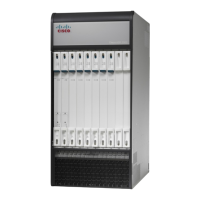A local clock with no external source is usually a last-resort clock when no better clock is available. It is
typically configured on a site's intermediate NTP server so that when a WAN network outage occurs, hosts
within the site can continue to synchronize amongst themselves.
You can configure this in ntpd or on many commercially available NTP devices. This local clock should
always have a high stratum number (8+) so that under normal conditions (when real sources are available)
this local clock will not be used.
Using a Load Balancer
The NTP daemon and protocol assume that each configured server is running NTP. If an NTP client is
configured to synchronize to a load balancer that relays and distributes packets to a set of real NTP servers,
the load balancer may distribute those packets dynamically and confuse the NTP client. NTP packets are
sensitive to latency and jitter. Relaying them through a load balancer can confuse the NTP client and is not a
supported practice.
Verifying the NTP Configuration
To verify the NTP Configuration, enter the show ntp associations command at the Exec mode. The output
displays information about all NTP servers.
The table below lists and briefly describes the parameters that appear in the output of the show ntp associations
command.
Table 21: Output Parameters for show ntp associations
DescriptionColumn Title
Lists the current NTP servers. One of these characters precedes each IP address to
show the server's current condition:
•
() Rejected/No response
•
X False tick
•
(.) Excess
•
- Outlyer
•
+ Candidate
•
# Selected
•
* System peer
•
(o) PPS peer
remote
Last reported NTP reference to which the server is synchronizing.refid
NTP server stratum level.st
Communication type: broadcast, multicast, etc.t
Number of seconds since the last contact.when
Polling interval between the system and the NTP server.poll
ASR 5500 Installation Guide
111
Initial System Configuration
Configuring Network Time Protocol Support

